Fantasia 2017, Day 15: Solving Mysteries, Or Not (Town In A Lake and Let There Be Light)
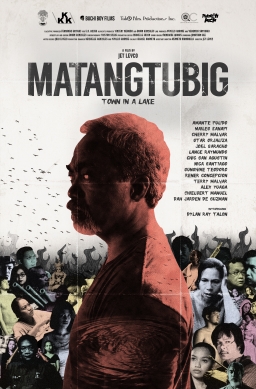 On Thursday, July 27, I planned to watch two films at the Fantasia International Film Festival. First, an artistically ambitious movie from the Philippines called Town In A Lake (Matangtubig). Then, later in the evening, a documentary about the quest to develop nuclear fusion technology called Let There Be Light. Both looked to be about the mysteries of the universe, in very different ways.
On Thursday, July 27, I planned to watch two films at the Fantasia International Film Festival. First, an artistically ambitious movie from the Philippines called Town In A Lake (Matangtubig). Then, later in the evening, a documentary about the quest to develop nuclear fusion technology called Let There Be Light. Both looked to be about the mysteries of the universe, in very different ways.
Directed by Jet Leyco and written by Brian Gonzales, Town In A Lake takes place in a small isolated town in the Philippine jungle with an official crime rate of zero. Until, as the movie opens, two girls are abducted. One is later found dead. The crime draws the attention of the national and international media, which descends on the town, disrupting the locals’ lives and mourning. Meanwhile, the investigation into the crime goes on. Who committed this evil, and why? Can there be a wholly natural explanation for it, coming on the heels of so much peace?
Watching Town In A Lake is only part of the experience of the film. It’s a story that doesn’t provide easy explanations, or even that much in the way of conventional character-centred drama. There are characters, and there is what is effectively a mystery story that ultimately takes on aspects beyond the merely rational. But these things emerge over the course of the film’s 88 minutes; we assemble the bits we’re given, the sounds and images we experience, and make the pieces make sense even as we’re absorbed by the sensory depth of the movie. This is a meditative experience, with long takes and subtle camera moves and a rich soundscape. Still, I found it took some pondering to understand (and I want here to express my thanks to filmmakers Shelagh Rowan-Legg and Gabriela MacLeod as well as critic Kurt Halfyard for a useful discussion after the film that clarified many things for me). There is a good argument that in attempting to understand what we see rationally, in attempting to work it out like a logic puzzle, one does not take the best approach to the film — that in so doing we come like the outsider media, imposing our own frames of understanding on matter that is richer and more allusive than can be explained by words and reason. “Relax,” runs one line of dialogue, “thinking won’t get you anywhere.” On the other hand, there is a counter-argument that if this is so, any explanation will be self-evidently insufficient, that the emotional and sensory resonance will naturally and necessarily dwarf the meaning of the logic. So it is here, I think. You can work out a perfectly sound explanation of what’s happening onscreen. But there is always more than the explanation can resolve. There are always more mysteries.
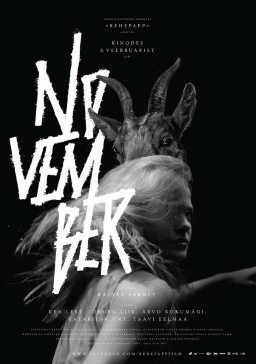 I wrote the other day about
I wrote the other day about 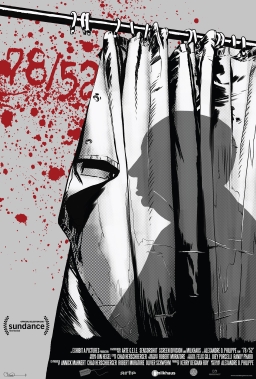 On Wednesday, July 26, I watched three movies at the Fantasia Film Festival. The first, which I’ll write about here, was a documentary about film itself. Or, more precisely, a single movie. Or, even more precisely, a single scene of a single movie. Directed by Alexandre Philippe, 78/52 is a 91-minute film that takes an in-depth look at one of the most famous sequences in cinematic history: the shower scene in Hitchcock’s Psycho.
On Wednesday, July 26, I watched three movies at the Fantasia Film Festival. The first, which I’ll write about here, was a documentary about film itself. Or, more precisely, a single movie. Or, even more precisely, a single scene of a single movie. Directed by Alexandre Philippe, 78/52 is a 91-minute film that takes an in-depth look at one of the most famous sequences in cinematic history: the shower scene in Hitchcock’s Psycho.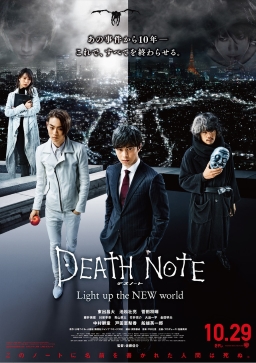 On Tuesday, July 25, I watched two movies at the Fantasia Film Festival. One was Atomic Blonde, which I’ve
On Tuesday, July 25, I watched two movies at the Fantasia Film Festival. One was Atomic Blonde, which I’ve 
 I had two events on my Fantaisa Festival schedule for Monday, July 24. First, I planned to see a stop-motion film from Japan called Junk Head. Then, I’d go to see a presentation by author Grady Hendrix of his book Paperbacks From Hell, about the boom of horror paperbacks in the 70s and 80s. I’d end up speaking briefly with Hendrix after his presentation, which led to my interviewing him for Black Gate; you can see that interview
I had two events on my Fantaisa Festival schedule for Monday, July 24. First, I planned to see a stop-motion film from Japan called Junk Head. Then, I’d go to see a presentation by author Grady Hendrix of his book Paperbacks From Hell, about the boom of horror paperbacks in the 70s and 80s. I’d end up speaking briefly with Hendrix after his presentation, which led to my interviewing him for Black Gate; you can see that interview 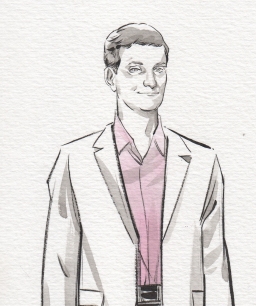 Grady Hendrix is a man who knows his horror. I saw him speak about horror paperbacks from the late 60s through the early 90s at the Fantasia International Film Festival, where he previewed his then-upcoming book Paperbacks From Hell. His passion and knowledge were clear at once. So was his wit — he clearly took these books seriously, but also knew when to take them lightly. His presentation was a powerful and slightly manic guide to a weird world of which I’d known nothing: a paperback world of mutilated dolls, of killer clowns, of diversely-talented skeletons, and, of course, of
Grady Hendrix is a man who knows his horror. I saw him speak about horror paperbacks from the late 60s through the early 90s at the Fantasia International Film Festival, where he previewed his then-upcoming book Paperbacks From Hell. His passion and knowledge were clear at once. So was his wit — he clearly took these books seriously, but also knew when to take them lightly. His presentation was a powerful and slightly manic guide to a weird world of which I’d known nothing: a paperback world of mutilated dolls, of killer clowns, of diversely-talented skeletons, and, of course, of 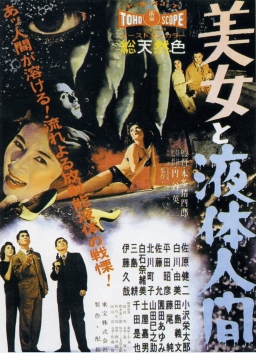 Sunday, July 23, I was down at Fantasia’s De Sève Theatre before noon to see a screening of the 1958 film The H-Man (Bijo To Ekatai-Ningen). I intended to follow that up with another vintage movie, the Shaw Brothers–produced 1983 film Bastard Swordsman (Tian can bian). Finally, I’d wrap up the day with a contemporary movie, the manga adaptation Gintama, which promised a mix of action and comedy. I liked the variety the films seemed to represent, and I was especially curious about The H-Man, which had been directed by Ishiro Honda, director of Godzilla.
Sunday, July 23, I was down at Fantasia’s De Sève Theatre before noon to see a screening of the 1958 film The H-Man (Bijo To Ekatai-Ningen). I intended to follow that up with another vintage movie, the Shaw Brothers–produced 1983 film Bastard Swordsman (Tian can bian). Finally, I’d wrap up the day with a contemporary movie, the manga adaptation Gintama, which promised a mix of action and comedy. I liked the variety the films seemed to represent, and I was especially curious about The H-Man, which had been directed by Ishiro Honda, director of Godzilla.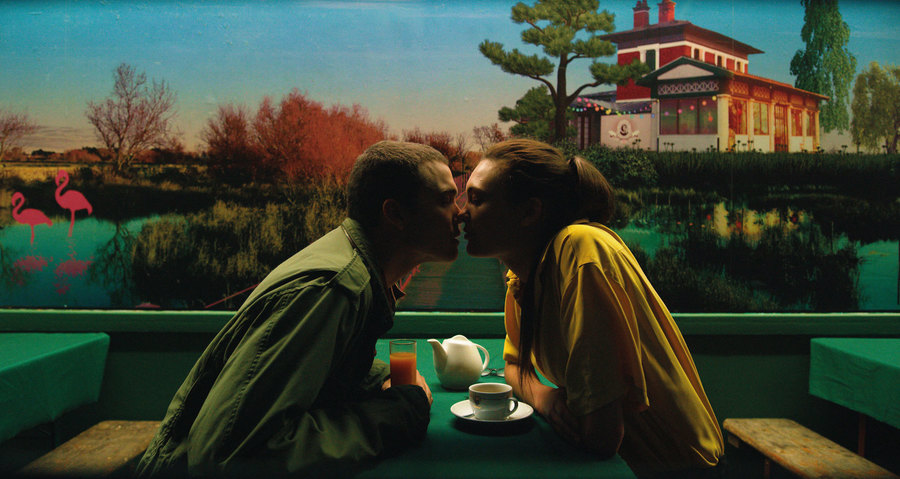
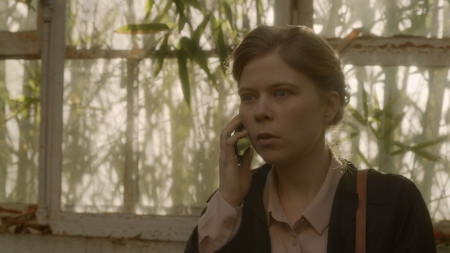 In 2016, the Fantasia International Film Festival created a showcase of short films by women directors:
In 2016, the Fantasia International Film Festival created a showcase of short films by women directors: